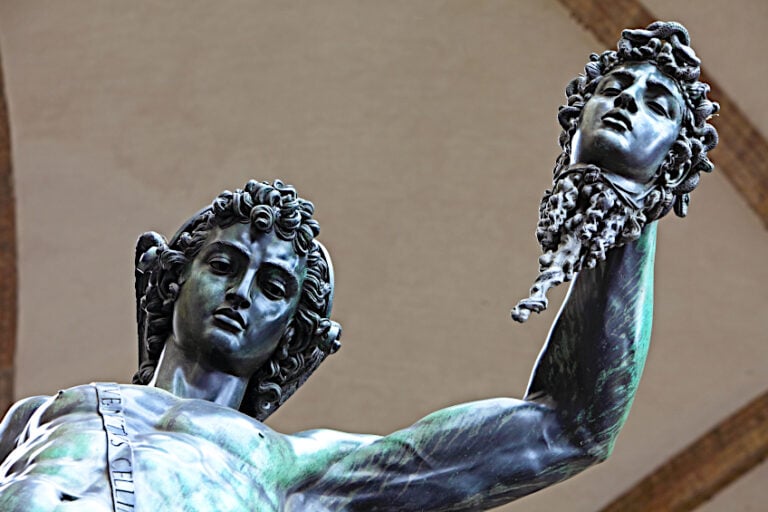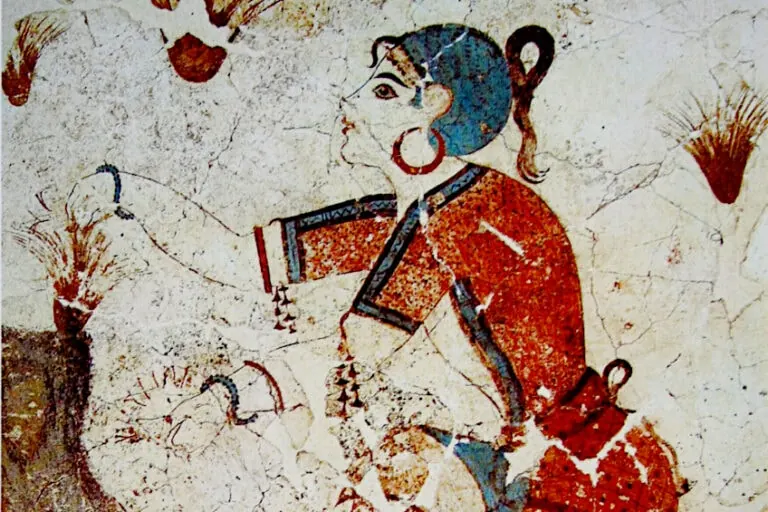Famous Ancient Artifacts – Artifacts From the Ancient World
Whether you watch the history channel late at night or simply have a fascination with ancient societies and cultures, the chances are you’ve heard of a few well-known ancient artifacts throughout your life (even if it was just in passing). There are loads of famous ancient artifacts derived from various cultures all over the world, so let’s have a look at a few of these famous ancient artifacts, what their significance is, where they’re from, what they’re made of, and why they stand out from the myriad of other artifacts from their region.
What Is an Ancient Artifact?
When most people think about ancient artifacts from around the world, they might conjure up scenes from movies like Indiana Jones or The Mummy. After all, the only reference that most of us have to the world of archaeology is through the history channel and other forms of media like films and TV shows. While real ancient artifacts are a bit different, they are no less intriguing.
Ancient artifacts in the real world are best described as bits and pieces of life from a long time ago that have been uncovered by archaeologists.
They function as pieces of evidence, showing how our ancestors lived in a time before electricity, smartphones, and in some cases even running water. They can show us the quality of life they had, what they ate, the deities they worshiped, and even how they eventually died!
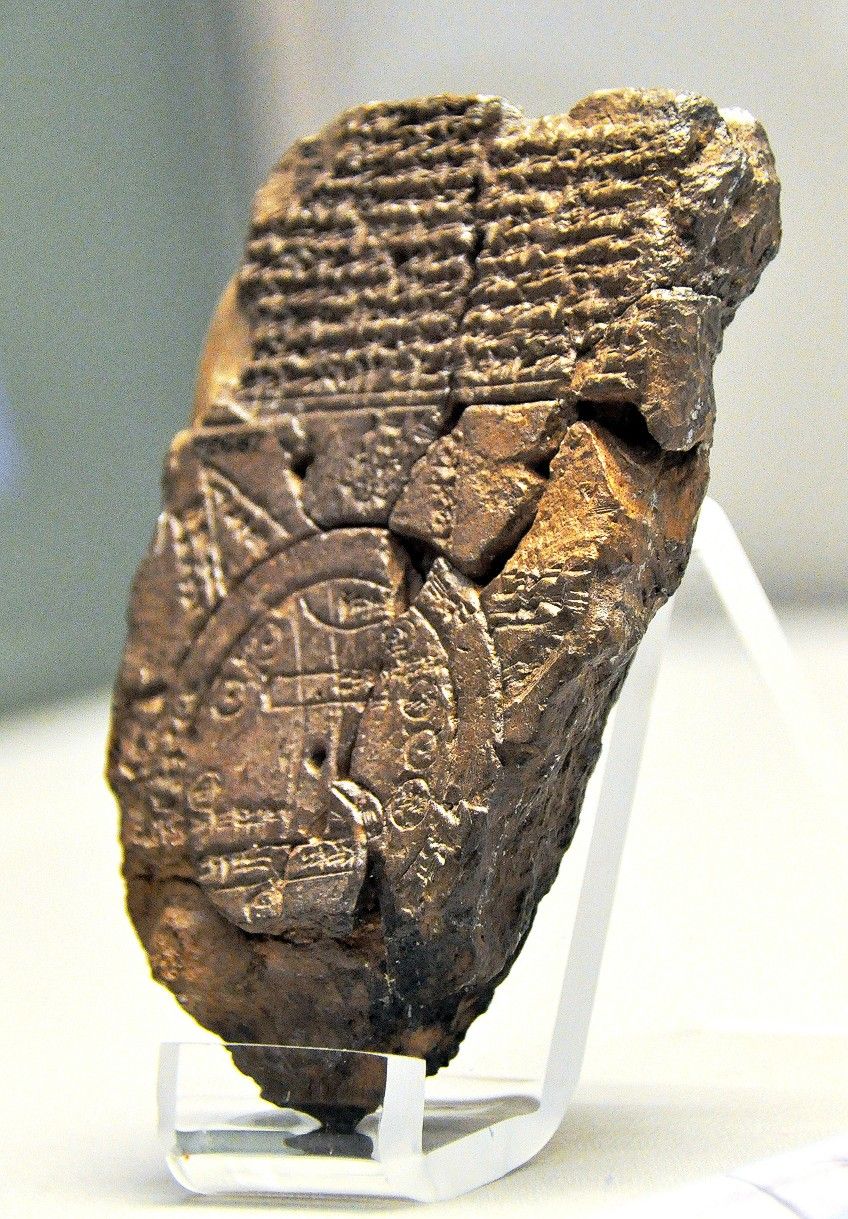 Map of the World from Sippar (6th Century BCE); Osama Shukir Muhammed Amin FRCP(Glasg), CC BY-SA 4.0, via Wikimedia Commons
Map of the World from Sippar (6th Century BCE); Osama Shukir Muhammed Amin FRCP(Glasg), CC BY-SA 4.0, via Wikimedia Commons
Which things qualify as ancient artifacts? Well, artifacts are typically physical in nature, ranging considerably in size, appearance, and even material depending on the type of culture being investigated. When working on an archaeological dig one can uncover a wide range of things capable of shedding light on how things used to be in an area and/or for a particular group of people.
Artifacts can be virtually anything considering that you never know what you’re going to find once you start looking. Something as simple as a pot, a fork, or a table can bare huge historical significance. Artifacts don’t need to be functional though, as some of the most famous ancient artifacts discovered to date are works of art like busts, carvings, and even stone tablets. On the other end of the spectrum, ancient artifacts can be (literally) monumental in size.
Ancient sites have revealed entire buildings that functioned as living quarters and places of worship for our ancestors, all of which can be classified as artifacts today.
Giant statues, ancient battlefields, sites of mass graves, and even ancient fishing vessels are, in our eyes, artifacts from the past. Just as our ancestors lived their lives and slowly created a collection of things to tell their stories after they were long gone, every day we are creating a similar collection of buildings, tools, technologies, clothing, and trinkets for our successors to find and be awed by once our time has run out. If anything, we’d like to think that we’ll make for an interesting history lesson.
Famous Ancient Artifacts
Now that you have an idea of what an ancient artifact is, let’s have a look at some famous ancient world artifacts that have made headlines over the years. These pieces typically have a large historical significance attached to them and are revered by the cultures and societies they’re derived from. This being said, let’s have a look at some of the most intriguing ancient world artifacts found to date.
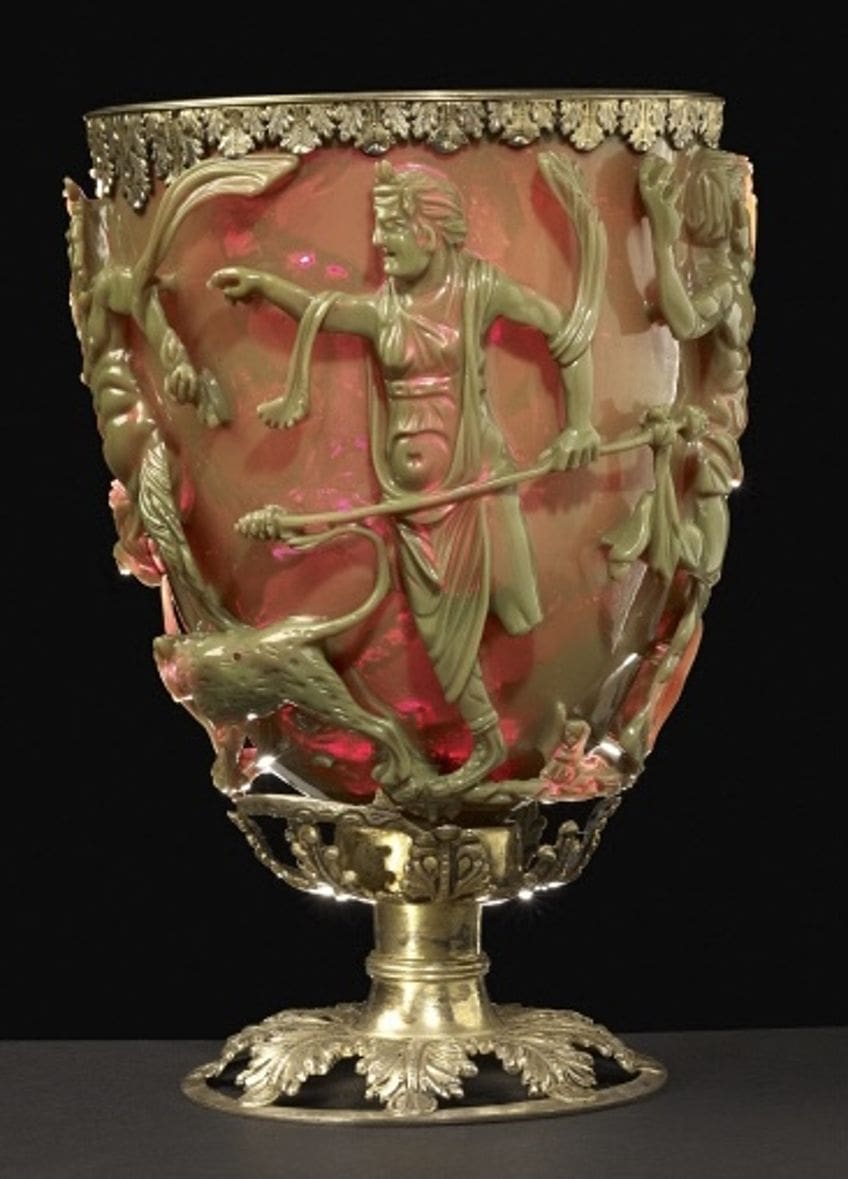 Lycurgus Cup (4th century CE); British Museum Collection., CC BY-SA 4.0, via Wikimedia Commons
Lycurgus Cup (4th century CE); British Museum Collection., CC BY-SA 4.0, via Wikimedia Commons
100,000-Year-Old Ochre Toolkit (Paleolithic Era)
| Culture of Origin | Ancient Southern African |
| Period of Creation | Paleolithic era |
| Medium | Ochre, bone, charcoal, grindstones, hammerstones |
| Dimensions (cm) | 2 – 20 (diameter) |
| Current Location | University of Witwatersrand, Johannesburg, South Africa |
Arguably the oldest artifact on this list hails all the way from South Africa. Ochre is a mixture of clay and other minerals which is and was used as a cosmetic in many African cultures. These toolkits discovered in 2008 allowed for the production and storage of ochre for later use, which has provided invaluable insight into human evolution and cultural practices of the time. Not only does this prove that aesthetics were important more than 100,000 years ago, but it proves that our species had the cognitive capacity to conceptualize functional storage devices and produce them using resources and materials available at the time.
Additionally, this proves that ancient humans had a rudimentary knowledge of how certain substances interact with one another.
The Antikythera Mechanism (20th Century BCE)
| Culture of Origin | Ancient Greek |
| Period of Creation | 20th century BCE |
| Medium | Bronze and wood |
| Dimensions (cm) | 8.63 × 18 × 8.89 |
| Current Location | National Archaeological Museum of Athens, Athens, Greece |
This might not be the oldest artifact in existence, but it is one of the most significant. The Antikythera mechanism is one of the few examples of mechanical mechanisms from over 1000 years that are more or less intact. The theorized application for this mechanism is that it was used to navigate using the Zodiac days of the year as displayed on its inner circumference.
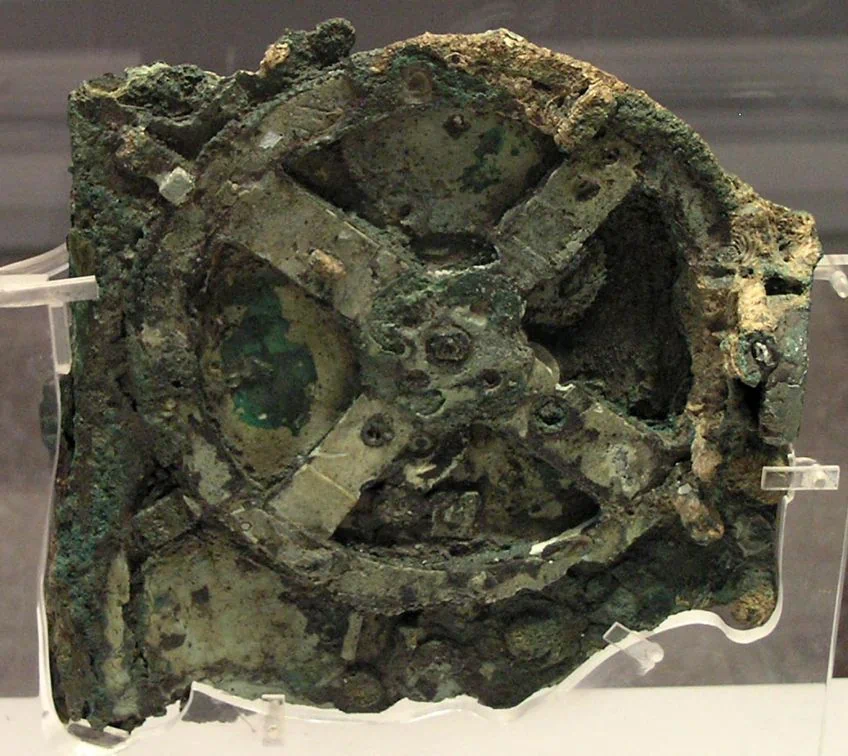 Machine d’Anticythère (20th Century BCE); No machine-readable author provided. Marsyas assumed (based on copyright claims)., CC BY-SA 3.0, via Wikimedia Commons
Machine d’Anticythère (20th Century BCE); No machine-readable author provided. Marsyas assumed (based on copyright claims)., CC BY-SA 3.0, via Wikimedia Commons
Various pointers/hands on the mechanism’s face would point towards the appropriate symbols in addition to the sun and the moon. These would work in conjunction with additional pointers that indicated that position or relative importance of the five planets the ancient Greeks were aware of at the time. It is believed that this artifact is over 2,000 years old.
Ancient French Phallic Pieces (12,000 BCE)
| Culture Of Origin | French |
| Period of Creation | 12,000 BCE |
| Medium | Wood and antler |
| Dimensions (cm) | N/A |
| Current Location | European Association of Urology, Arnhem, Netherlands |
While we like to think of modern society as being fairly sex-positive compared to the age our ancestors lived in, we might be (at least a little bit) wrong. These ancient phallic pieces were discovered in France and date back as far as 12,000 BC, and although they were initially believed to be purely for display purposes, they’re now believed to have had more practical applications. All of these artifacts lack piercings, a visible foreskin, and other anatomical characteristics that should be present.
They are currently on display at the European Association of Urology, where they are being studied in an effort to better understand the practices of the time as well as how they were made of materials like wood, antler, and similarly malleable materials.
Cuneiform Clay Tablet Sent to the Merchant Ea-Nasir (1750 BCE)
| Culture of Origin | Ancient Mesopotamian |
| Period of Creation | 1750 BCE |
| Medium | Clay |
| Dimensions (cm) | 11.58 x 4.97 x 2.59 |
| Current Location | The British Museum, London, England |
There’s nothing like an ancient artifact with some humor attached to it. This ancient tablet is written in cuneiform, one of the earliest known written languages consisting of pictograms instead of letters. It tells the story of a merchant who paid for copper, received a substandard delivery of copper, sent it back, and with it, this stone tablet.
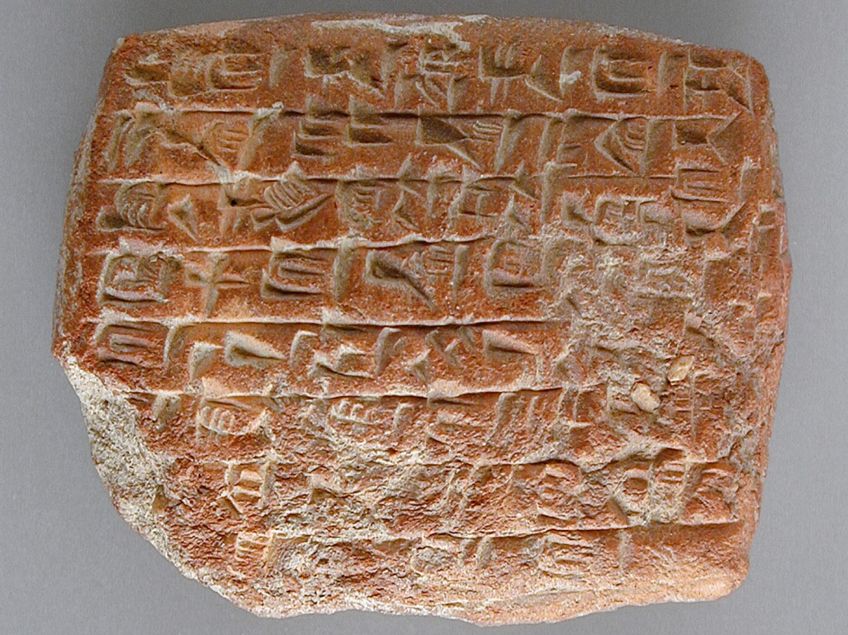 Clay Tablet with Cuneiform Inscription (1750 BCE); Los Angeles County Museum of Art, Public domain, via Wikimedia Commons
Clay Tablet with Cuneiform Inscription (1750 BCE); Los Angeles County Museum of Art, Public domain, via Wikimedia Commons
The buyer, whose name was Nanni, complained that he had issues with another delivery from the same source and that his servant who facilitated the transaction had been mistreated. The tablet was created in 1750 BCE and discovered around 1922 by Sir Leonard Woolley. It’s definitely a far cry from receiving a strongly worded email from a dissatisfied customer today and is one of the most famous artifacts the world over.
Czech Wooden Water Well (5255 BCE)
| Culture of Origin | Ancient Czech |
| Period of Creation | 5255 BCE |
| Medium | Wood |
| Dimensions (cm) | N/A |
| Current Location | Czech Republic, Central Europe |
There are loads of wells all over the world with great historical significance, which begs the question of what makes this one so special. Well, aside from being a wooden well that is specific to the region, the wood used to make this well is also unique. Age rings on the lumber have revealed the wood used to make this well as being 7,275 years old! This makes it easily one of the oldest wooden structures on the face of the planet. The fact that the wood fibers have allowed the well to maintain its integrity for this long is extremely impressive, and it seems that the methods used to construct it were intended for longevity as well.
There aren’t many examples of wooden structures on the planet that have lasted this long.
The Tomb of King Tutankhamun (1334 – 1335 BCE)
| Culture of Origin | Ancient Egyptian |
| Period of Creation | 1334 – 1335 BCE |
| Medium | Stone and gold |
| Dimensions (cm) | Burial Chamber: 599.84 x 399.89 Sarcophagus: 223.49 x 83.79 x 105.48 |
| Current Location | Egyptian Museum, Cairo, Egypt |
Since we’re looking at artifacts from the ancient world, we thought we start things off with a bang. The tomb of king Tutankhamun lay hidden for almost 3,250 years, only to be discovered in the heat of the first world war. As the youngest king of Egypt, his tomb was an incredible discovery and held a whole host of incredibly well-persevered archaeological finds. The person who led the discovery of his tomb was the now world-renowned archaeologist Howard Cater, whose lucky break came when a young man fetching water stumbled over a rock revealing the steps of the entryway to the long-lost tomb. This fortuitous series of events led to one of the largest archaeological finds in modern history.
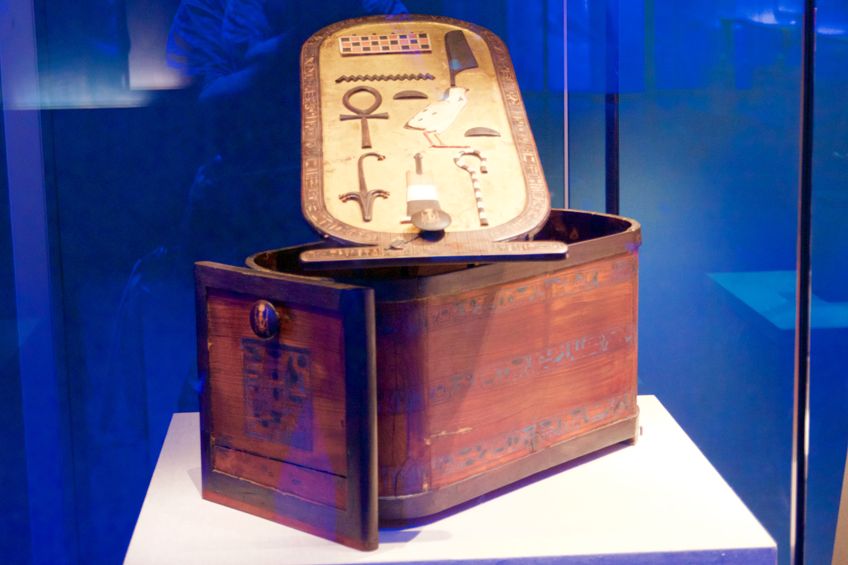 King Tutankhamun’s tomb goods cartouche box (1334 – 1335 BCE); Bill Abbott, CC BY-SA 2.0, via Wikimedia Commons
King Tutankhamun’s tomb goods cartouche box (1334 – 1335 BCE); Bill Abbott, CC BY-SA 2.0, via Wikimedia Commons
Once excavation has been completed, loads of artifacts including gold, jewels, statues, pottery, weaponry, clothing, the king’s chariot, and the famous mummified organs of the boy king were found. The final resting place of thing king himself was found in the central chamber behind a set of large doors bound with the necropolis seal, which evoked the protection of the Egyptian lord of the underworld, Anubis.
Reptilian Statues of Al Ubaid (4500 BCE)
| Culture of Origin | Ancient Mesopotamian |
| Period of Creation | 4500 BCE |
| Medium | Clay |
| Dimensions (cm) | 13.6 (h) |
| Current Location | Metropolitan Museum of Art, New York City, USA |
If you enjoy a good conspiracy theory, then these ancient artifacts are sure to tickle your fancy. These miniature statues were found in an area known as Al Ubaid, which is now modern-day Iraq. They appear to represent the female form, aside from the heads and tails which are serpentine in nature. These pieces are all made of baked clay that has been painstakingly shaped into the mesmerizing forms you see here. These examples are believed to be 7,000 years old, but according to the Metropolitan Museum of Art where they are now housed their purpose is unknown.
Whether it be for religious applications or simply an expressive purpose, these half-human half-serpent figures caused quite a stir in the archaeological community when they were discovered.
The Dead Sea Scrolls (8th Century BCE)
| Culture of Origin | Ancient Jewish |
| Period of Creation | 8th century BCE |
| Medium | Papyrus, copper, parchment |
| Dimensions (cm) | N/A |
| Current Location | Shrine of the Book, Jerusalem, Israel; The Jordan Museum, Ras Al-Ein, Amman, Jordan |
We would be remiss not to mention the dead sea scrolls while discussing old human artifacts. If you haven’t heard of them before, or aren’t particularly religious, the dead sea scrolls are a set of manuscripts detailing events and persons that are biblically canon. Thousands of fragments of these scrolls were found inside caves along the dead sea, some intact, and others damaged by natural causes and human contact.
 Genesis 1 Dead Sea Scroll (8th century BCE); KetefHinnomFan, CC0, via Wikimedia Commons
Genesis 1 Dead Sea Scroll (8th century BCE); KetefHinnomFan, CC0, via Wikimedia Commons
These scrolls were initially discovered around 1946 from a number of caves in the area and have since been compiled and restored for display in the Shrine of the Book and the Jordan Museum respectively, due to disputes regarding ownership of the scrolls. Although the majority of the scrolls are in Hebrew, some are in Aramaic, and some are even found to be written in Greek. Even the material of the scrolls varies considerably, with some being made of papyrus, some of the parchment, and one, in particular, has been said to be made of copper. Dating of the scrolls has put their initial creation within the last three centuries, other artifacts in the region have been found to date as far back as the 8th century.
The Mesopotamian Horse Blinker (8th Century BCE)
| Culture of Origin | Ancient Mesopotamia |
| Period of Creation | 8th century BCE |
| Medium | Ivory and wood |
| Dimensions (cm) | 10.61 × 19 × 33.42 |
| Current Location | Metropolitan Museum of Art, New York City, USA |
While the shape of these suggests that they were used for practical applications, most of these horseshoe reliefs were used primarily for display purposes. They were designed by Phoenician artists who were greatly influenced by Egyptian artworks, which is made clear by the presence of the sphinx and various other Egyptian iconographies on the surface of these artifacts. These were particularly popular in the 8th century and were either carved on one side or both. They often featured intricate gold and/or ivory inlays which added to the overall value and prestige of the workpiece.
These horse blinkers could feature a wide variety of Egyptian iconographies including snakes, sun disks, names of deities, and even winged uraeus!
Corinthian Helmet from The Battle of Marathon (490 BCE)
| Culture of Origin | Ancient Greek |
| Period of Creation | 490 BCE |
| Medium | Bronze |
| Dimensions (cm) | 21.99 x 17.78 |
| Current Location | Royal Ontario Museum’s Gallery of Greece, Toronto, Canada |
Whether your only knowledge of the hoplite helm is from movies like 300 or cartoonish depictions of ancient roman soldiers, this design is probably familiar to you in one way or another. The hoplite helmet is an ancient design made of bronze, specifically designed to shield the wearer’s face and neck from enemy spears and shields. There are loads of examples of this type of helmet all over the world, but this one was particularly well-preserved. It was so well preserved that when it was found it still housed its owner’s skull! It has been said that this helmet was made all the back to 490 BCE, making it one of the oldest historical artifacts we have today, and it’s a pretty cool-looking helmet design too!
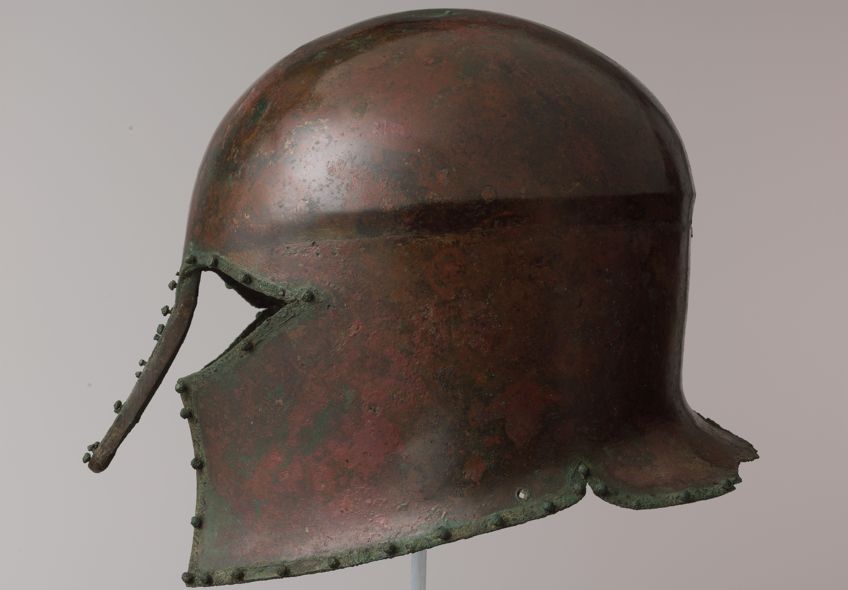 Corinthian Bronze Helmet (490 BCE); See page for author, CC0, via Wikimedia Commons
Corinthian Bronze Helmet (490 BCE); See page for author, CC0, via Wikimedia Commons
Even though this is what most depictions of Greek warriors at the time imply they wore, this helmet design was eventually modified to provide better visibility for the wearer and even allowed them to rest the helmet upwards when not in battle. This being said, even the statue of King Leonidas himself in the city of Sparti (previously Sparta) depicts the warrior king wearing this iconic helm. This trolley one of the most famous artifacts around.
Ancient Roman Dagger (1st Century BCE)
| Culture of Origin | Ancient Roman |
| Period of Creation | 1st century BCE |
| Medium | Steel, wood, and silver |
| Dimensions (cm) | 17.24 |
| Current Location | Haltern’s Roman History Museum, Rome, Italy |
Internships usually involve a lot of running around, getting coffee, and occasionally helping out around the office. However, while digging through a trench in Germany during an archaeological internship a 19-year-old named Calman got more than they bargained for. While digging around, they unearthed a Roman Dagger believed to be around 2,000 years old. The dagger itself was encrusted with solid and dirt, but once restored reviled a beautiful blade attached to a handle inlaid with silver and glass. The sheath of the blade had a wooden lining with red acrylic accents, indicating status and wealth.
The blade was found with its leather belt intact, which would have been used to holster it for the soldier.
The Terracotta Army (3rd Century BCE)
| Culture of Origin | Ancient Chinese |
| Period of Creation | 3rd century BCE |
| Medium | Terracotta clay |
| Dimensions (sq mi) | 38 square miles (total site size) |
| Current Location | Emperor Qinshihuang’s Mausoleum Site Museum, Xi’an, China |
The second old human artifact with a royal twist we’ll be having a look at on this list is the terracotta army. Created around the 3rd century BCE, these figures are made out of terracotta clay and were buried with the first emperor of China Qin Shi Huang in the belief that they would protect him in the afterlife. They were discovered by farmers in 1976 in Lintong County and have become something of a world marvel ever since.
 Terracotta Army Pit 1 (3rd century BCE); Maros M r a z (Maros), CC BY-SA 3.0, via Wikimedia Commons
Terracotta Army Pit 1 (3rd century BCE); Maros M r a z (Maros), CC BY-SA 3.0, via Wikimedia Commons
The pieces vary considerably in height according to their military rank, with the generals being the tallest. The sheer number and scale of the find are incredible, with the pits housing these figures containing around 130 chariots, 150 horses, and nearly 8,000 soldiers. It wasn’t just the king’s military that was sent with him to the afterlife, as renditions of officials, musicians, and even acrobats have been found alongside his final resting place.
The Pontius Pilate Ring (1st Century BCE – Mid-1st Century CE)
| Culture of Origin | Ancient Roman |
| Period of Creation | 1st century BCE – mid-1st century CE |
| Medium | Alloy |
| Dimensions (cm) | 33.02 (diameter) |
| Current Location | Ancient fortress and palace, Bethlehem, Israel |
In the New Testament of the Christian Bible, Pontius Pilate is said to be the one who portrayed Jesus Christ and ordered his murder. This ring is indented with his insignia, which was discovered during the restoration process after it was discovered in Bethlehem in the late 1960s at a dig site near the city of Bethlehem. It is considered unlikely that the ring actually belonged to Pontius Pilate as he was a rather wealthy individual at the time, and this ring is made of alloy instead of a more precious metal like gold and/or silver.
This being said, it is a 2,000-year-old ring with quite a historically significant figure’s name attached to it, making it a great find for the team involved.
The Nazca Lines (200 BCE – 200 CE)
| Culture of Origin | Native Nazca (Ancient Peruvian) |
| Period of Creation | 200 BCE – 200 CE |
| Medium | Line on rock |
| Dimensions (km sq) | 30.57 km sq |
| Current Location | Soil of the Nazca desert in Southern Peru |
One of the largest famous artifacts (quite literally) on the face of the planet is the Nazca lines. Found in Southern Peru, these huge lines span between 400 to 1,100 yards and are believed to have been made all the way back in 500 BCE. They depict numerous animals on an incredible scale which vary in both intricacy and size from one to the other.
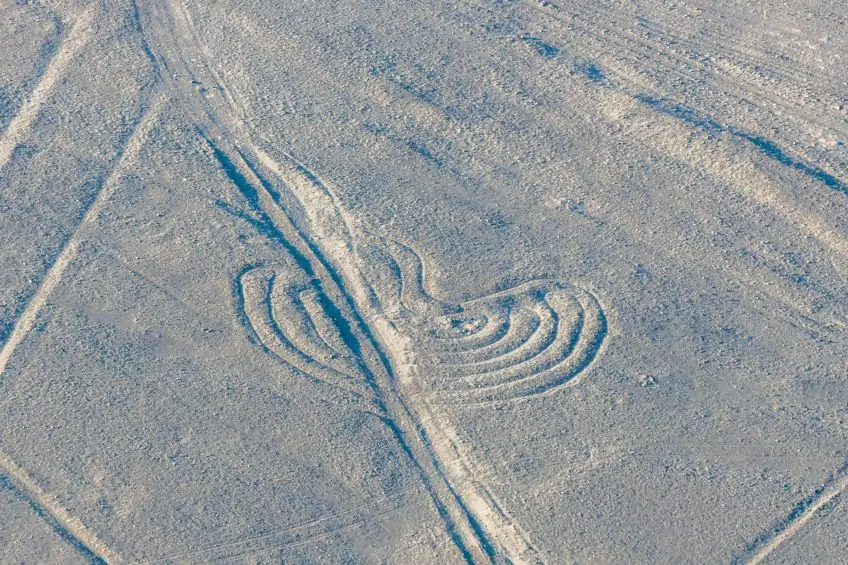 Líneas de Nazca (200 BCE – 200 CE); Diego Delso, CC BY-SA 4.0, via Wikimedia Commons
Líneas de Nazca (200 BCE – 200 CE); Diego Delso, CC BY-SA 4.0, via Wikimedia Commons
There are many theories surrounding what purpose these lines served considering that aerial transport was but a thought back then. The leading theory around their existence is that they served ritualistic purposes, as the natives believed that the seabirds (as depicted in the linework) were capable of bringing rain to the region when needed.
Electoral Slogans of Pompeii (79 CE)
| Culture of Origin | Ancient Roman |
| Period of Creation | 79 CE |
| Medium | Etchings in stone |
| Dimensions (cm) | N/A |
| Current Location | Pompeii, Italy |
If you think wearing an “I voted” sticker shows devotion to your candidate of choice, why not try carving their name into the walls of your home? In the ancient city of Pompeii, this is exactly what seems to have happened before the people of the city met their untimely death at the hands of volcanic ash. Slogans encouraging visitors and passers-by to vote for their politician of choice were inscribed into the walls of many homes, with this one in particular reading “Helvius Sabinus for public office”. The inscription is etched in Latin, but there are examples of both Latin and Ancient Roman being spoken in the region at the time.
It is believed that this piece was created between 600 BCE and the year 79 CE.
The Fasting Siddhartha Sculpture (3rd Century CE)
| Culture of Origin | Ancient Indian Kushan dynasty |
| Period of Creation | 3rd century CE |
| Medium | Gandharan Schist Stone |
| Dimensions (cm) | 83.82 x 53.34 x 25.4 |
| Current Location | Lahore Museum Pakistan, Lahore, Pakistan |
If you’re interested in rare historical artifacts, it doesn’t get any rarer than this depiction of the fasting Buddha. This piece and pieces are believed to have been made around the 5th century and are rare due to their depiction of the Holy Buddha in an emaciated state. The ribs, cheekbones, wrist bones, and tendons of the Buddha are clearly depicted in this rendition of the scene. This statue and statues are exceedingly rare, so much so that it’s been part of the Lahore Museum of art since the year 1894 and doesn’t appear to be leaving any time soon.
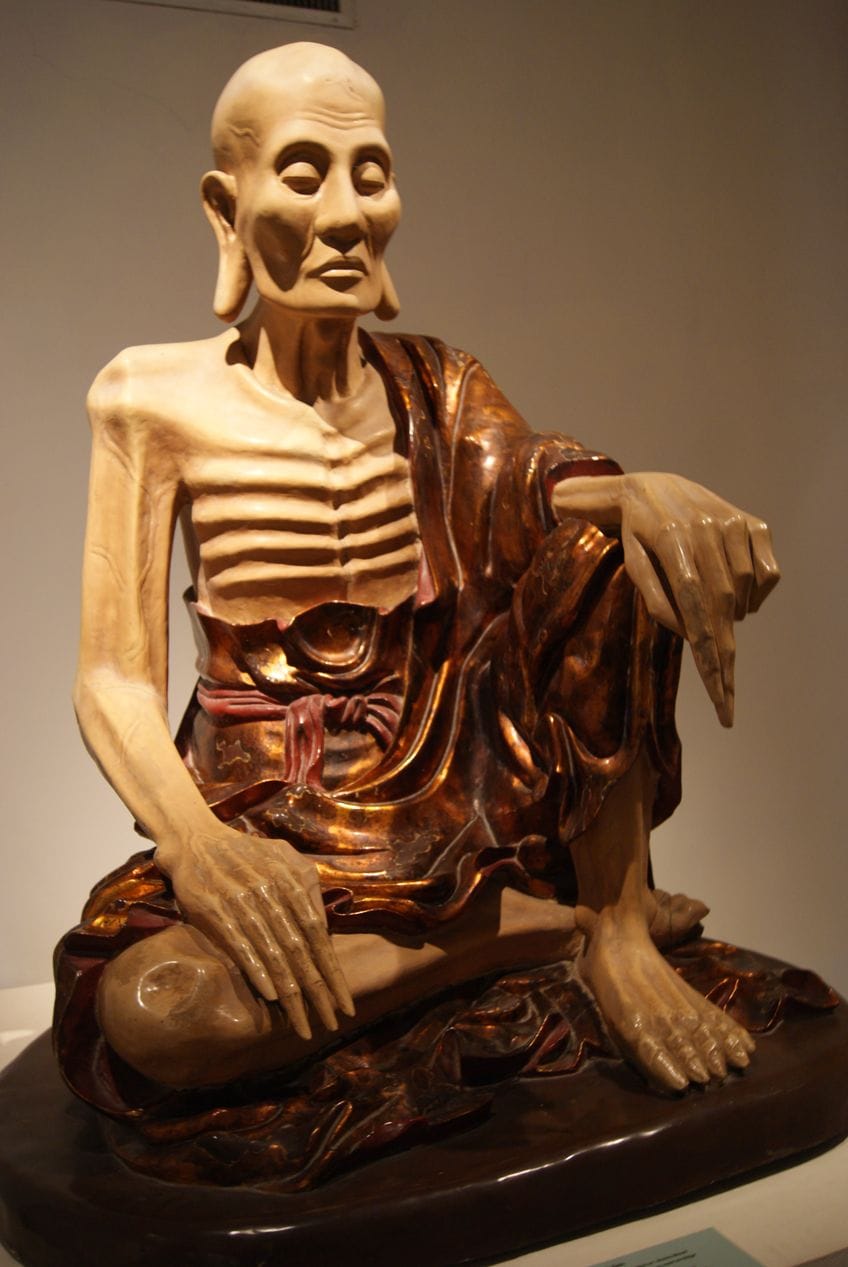 Statue of Shakyamuni on the snowy mountain (3rd century CE); Vietnam National Museum of Fine Arts, CC BY-SA 3.0, via Wikimedia Commons
Statue of Shakyamuni on the snowy mountain (3rd century CE); Vietnam National Museum of Fine Arts, CC BY-SA 3.0, via Wikimedia Commons
The piece is around 33 inches in height and is made of solid Gandharan Schist stone, making it one of the smaller ancient artifacts on this list. Statues like this are revered and sought after because it’s believed that praying to them assists with mental fortitude and spiritual enlightenment. Visitors describe viewing these famous artifacts as having an immediate impact on them, truly communicating the discipline and strength of will needed to fast for nearly 50 days.
The Roman Folding Stool (2nd Century CE)
| Culture of Origin | Ancient Roman |
| Period of Creation | 2nd century CE |
| Medium | Bronze |
| Dimensions | 49.47 x 4 |
| Current Location | Metropolitan Museum of Art, New York City, USA |
We like to think that we’ve come a long way since our ancestors had to hunt for their food and warm their homes with wood fires. However, if we’re being honest, we’ve really just improved upon things they discovered centuries ago. A perfect illustration of this is the folding chair, examples of which have been found all over remnants of the once great empire. Finding examples that are intact has proven to be challenging, but there are one or two out there that showcase the incredible ingenuity human beings are capable of when they want to get off their feet at a moment’s notice.
Some examples of these chairs are thought to be as old as the second century CE, pre-dating the camping chair in your garage by quite some time.
The Speyer Wine Bottle (325 – 350 CE)
| Culture of Origin | Ancient Germanic |
| Period of Creation | 325 – 350 CE |
| Medium | Glass |
| Dimensions (fl. oz) | 51 U.S. fl. oz |
| Current Location | Historical Museum of the Palatinate, Speyer, Germany |
If you’re a wine connoisseur, then this one should be right up your alley. Discovered in Germany all the way back in 1867, this wine bottle was uncovered in the grave of a couple who had been buried with an assortment of such bottles. This one, however, was the only one left intact due to the presence of the thick wax seal around its neck.
 The Speyer Wine Bottle (325 – 350 CE); Carole Raddato from FRANKFURT, Germany, CC BY-SA 2.0, via Wikimedia Commons
The Speyer Wine Bottle (325 – 350 CE); Carole Raddato from FRANKFURT, Germany, CC BY-SA 2.0, via Wikimedia Commons
The fermentation process of the alcohol, herbs, and various other compounds present in the bottle makes for an interesting (and some squeamish) aesthetic impact. This piece is currently on display at the Historical Museum of Palatinate, where you’ll be able to view both it and a variety of other pieces from this point in history.
The Lycurgus Cups (4th Century CE)
| Culture of Origin | Ancient Roman |
| Period of Creation | 4th century CE |
| Medium | Dichroic glass |
| Dimensions (cm) | 15.87 x 12.95 |
| Current Location | British Museum, London, England |
Artifacts from the ancient world don’t always have to be enshrined in elaborate tombs though, some artifacts from the ancient world have been stored and preserved to a degree where they are still perfectly functional. A good example of this is the Lycurgus cups. These cups are speculated to have surfaced all the way back in 1857 under the ownership of Lionel de Rothschild. What makes this cup so special? Well, it’s made of dichroic class. This is a special type of glass that changes color depending on the direction that light hits it. If light hits the glass from behind it (directed toward the viewer) the glass appears red. If light hits the glass from the front (behind the viewer) the glass appears green. Pretty cool right?
This style of glass is known as a dietretum or “cage cup”. Essentially, the glass has been carefully carved back in little recesses until something resembling a “cage” is left.
While most cups like this have intricate geometric shapes as the “cage” these ones depict a batter between King Lycurgus and Ambrosia. The scene depicts Ambrosia transforming into vines and strangling the king to death. This is widely considered to be the best-preserved example of a dietretum taking into account its aesthetic appearance and functionality. To this day, attempts to perfectly replicate the glass used to make this cup have been unsuccessful, which isn’t for a lack of trying on behalf of both scientists and historians alike.
The Oseberg Ship (800 CE)
| Culture of Origin | Ancient Norse |
| Period of Creation | 800 CE |
| Medium | Wood |
| Dimensions (cm sq) | 295.656 cm sq |
| Current Location | Viking Ship Museum at Bygdøy, Oslo, Norway |
One of the largest and oldest artifact examples ever found has to be the ornate Viking ship known as the Oseberg ship, which is believed to have been designed all the way back in the year 820. This ship is one of many discovered from this area, albeit in significantly better condition, and in one piece. Discovered in the year 1904, it was one of many artifacts uncovered in the Viking burial mound on a farm near the town of Tønsberg, Norway.
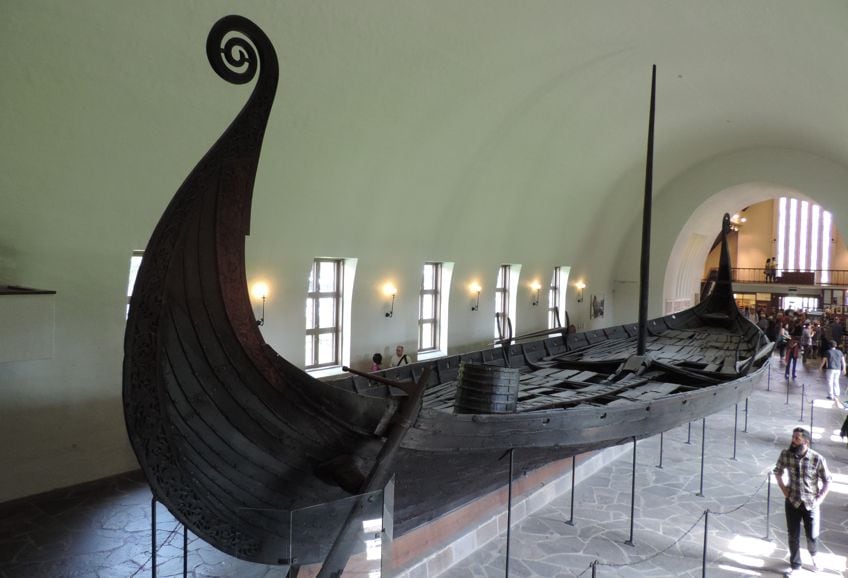 The Osberg Ship (800 CE); Vassia Atanassova – Spiritia, CC BY-SA 3.0, via Wikimedia Commons
The Osberg Ship (800 CE); Vassia Atanassova – Spiritia, CC BY-SA 3.0, via Wikimedia Commons
The entire boat and its contents are on display at the Viking Ship Museum in Bygdøy. Many aspects of the ship are dated as older than the creation of the overall structure, and this makes sense considering that due to the labor involved in creating parts for these ships, parts were often reused and recycled wherever possible.
Now that you know what an ancient artifact is, and a little bit about some of the most famous ancient artifacts we’ve discovered to date, it’s time for you to get out there and put your newfound knowledge to the test. Artifacts are an important part of our past as species, and truly put where we are as a society today into perspective.
Frequently Asked Questions
Are Ancient Artifacts on eBay Real?
While there are loads of artifacts for sale online, studies have shown that nearly all of them are fake. If you are thinking about purchasing antiquities online, it’s best to do so using a reputable establishment to ensure you aren’t purchasing counterfeit goods.
Why Are Ancient Artifacts Important?
Ancient artifacts offer a window into the past whereby we can learn numerous things about the lives of our predecessors. What kinds of things you ask? Well, we can learn what they ate, what kinds of tools they used, how they lived, what kind of clothing they wore, whether they had a formal government or military, and how they lived their lives from day to day.
What Should I Do if I Find an Artifact?
This is a good question. If you suspect that you’ve stumbled upon a particularly important artifact do not touch it, attempt to re-bury it, or move it. Simply make a note of where you are and contact your local museum or university regarding the nature of your finding.
What Is the Oldest Human Artifact?
There are loads of truly ancient artifacts out there, but the oldest human artifact by far has to be the 3.3-million-year-old tool kit found in Lomekwi. It is currently on display at the national museum of Nairobi, Kenya.

I am deeply passionate about history and am constantly fascinated by the rich and complex stories of the past. As the editor-in-chief of learning-history.com, I have the opportunity to share this passion with a wide audience through the creation and distribution of engaging and informative content about historical events, persons, and cultures. Whether it’s through writing articles and blog posts or creating videos or podcasts, I strive to bring the past to life in a way that is both accurate and enjoyable. My expertise in history, combined with my strong writing and communication skills, allows me to effectively communicate complex historical concepts and make them accessible and interesting to a wide range of readers. I am truly grateful for the opportunity to share my love of history with others through my work on learning-history.com.



